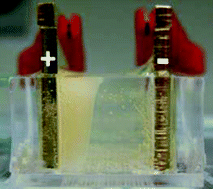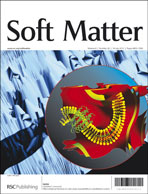Silk electrogelation involves the transition of an aqueous silk fibroin solution to a gel state (E-gel) in the presence of an electric current. The process is based on local pH changes as a result of water electrolysis – generating H+ and OH− ions at the (+) and (−) electrodes, respectively. Silk fibroin has a pI = 4.2 and when local pH < pI, E-gel forms. An experimental system was constructed that allowed the measurement of E-gel growth and pH distribution for an applied current. To explain the observed rectangular pH profile of pHgel ≈ 4 surrounded by pHsilk-solution ≈ 10, a finite-element ion electrodiffusion model was developed. The model relies on electrodiffusion of the generated H+ and OH− ions. Initially, inputs into the model were the measured E-gel and voltage curves. The governing ion electrodiffusion equations were solved and the calculated pH matched the experimental pH profile, indicating that ion electrodiffusion dictates local pH changes and E-gel growth. Furthermore, the model predicted the constant currents (2 mA and 3 mA) necessary for two hypothetical E-gel growth curves and these results were then validated experimentally. The model thus shows how ion electrodiffusion governs the electrogelation process and also provides predictable outcomes for fundamental and practical E-gel applications.

You have access to this article
 Please wait while we load your content...
Something went wrong. Try again?
Please wait while we load your content...
Something went wrong. Try again?


 Please wait while we load your content...
Please wait while we load your content...